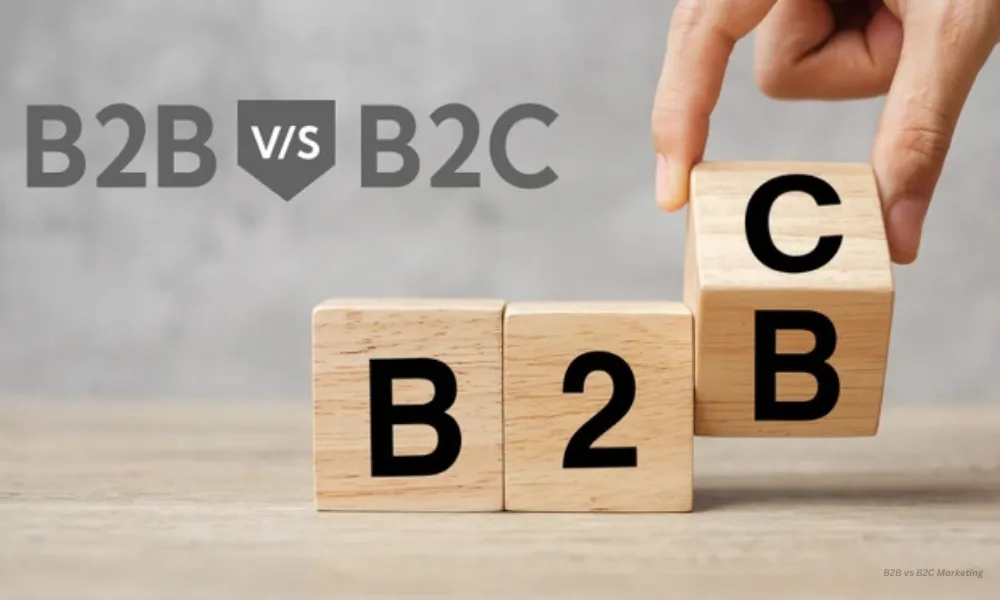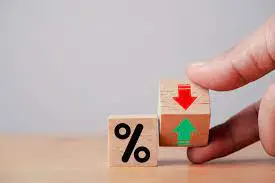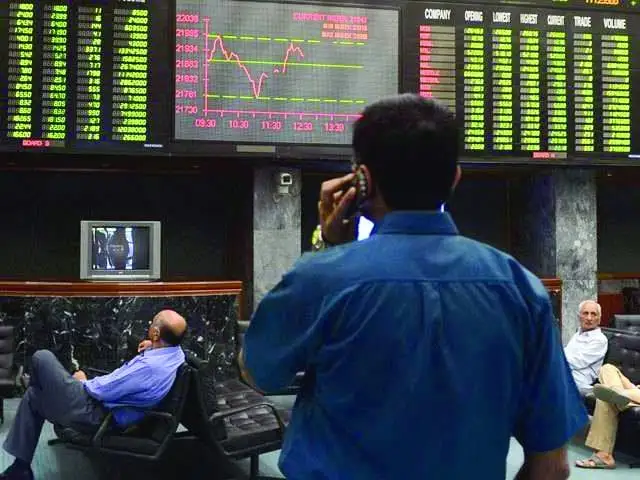B2B vs B2C Marketing: What’s the Real Difference and Which Strategy Wins?

Let’s make this easy for you—if you’re marketing to other businesses, you need logic, proof, and relationships. If you’re marketing to consumers, you need emotion, experience, and convenience. That’s the heart of B2B vs B2C marketing.
Now let’s break that down step-by-step and help you decide how to structure your strategy for real results.
What Does the User Want to Know First?
Quick Answer for Marketers
If you’re a digital marketer, here’s your one-liner takeaway:
B2B is about building long-term trust. B2C is about winning quick conversions.
The tone, platform, timing, and purpose behind every campaign depend on whether your audience is a business or an individual.
The Primary Differences at a Glance
| Feature | B2B Marketing | B2C Marketing |
|---|---|---|
| Buyer Type | Businesses | Individuals |
| Sales Cycle | Longer, multi-step | Short, often impulsive |
| Emotional Influence | Low (rational) | High (emotional) |
| Content Focus | Value, ROI, Logic | Experience, Desire, Value |
| Channel Preference | LinkedIn, Email, Webinars | Instagram, Facebook, YouTube |
What Is B2B Marketing?
Definition and Purpose
B2B (Business-to-Business) marketing involves promoting products or services to other companies. These products often solve specific business problems, improve operations, or support growth.
Example: A company selling project management software to enterprises.
Key Characteristics of B2B Marketing
- Decision-makers: CEOs, CTOs, procurement managers
- Multi-step approval process
- High-ticket items
- Focus on ROI, efficiency, and scalability
What Is B2C Marketing?
Definition and Purpose
B2C (Business-to-Consumer) marketing targets individual customers for personal use. These products are often driven by emotion, trends, or immediate needs.
Example: A brand selling sneakers or skincare online.
Key Characteristics of B2C Marketing
- Shorter sales cycles
- Impulse buying behavior
- Pricing is usually lower
- Emotional branding is critical
Audience Differences in B2B vs B2C
Who You’re Selling To
- B2B: Multiple stakeholders, including finance, ops, and legal teams
- B2C: One person, sometimes influenced by friends or social proof
How They Make Decisions
- B2B: Logical, ROI-driven, data-heavy
- B2C: Emotional, lifestyle-focused, brand-driven
Decision-Making Process
Emotional vs Rational Buying
- B2B buyers need numbers, demos, and case studies
- B2C buyers want storytelling, relatability, and vibes
Sales Cycle Comparison
- B2B: Can take weeks or months
- B2C: Can happen in minutes or days
Marketing Channels: Where Do You Reach Your Audience?
Best Channels for B2B
- Email Marketing
- Webinars
- Industry Events
- SEO and Content Marketing
Best Channels for B2C
- Facebook & Instagram Ads
- Influencer Marketing
- YouTube
- TikTok
- Google Shopping Ads
Content Strategy Differences
Type of Content for B2B
- Whitepapers
- Case studies
- Detailed blog posts
- Ebooks
- Comparison guides
Type of Content for B2C
- Short-form videos
- Memes
- User-generated content
- Product reviews
- Interactive quizzes
Messaging and Tone
B2B Messaging Style
- Professional, clear, and data-driven
- Focused on solving a problem or increasing efficiency
B2C Messaging Style
- Fun, casual, and relatable
- Focused on emotion, aspiration, and lifestyle
Social Media Strategy
Platforms That Work for B2B
- LinkedIn (Top platform)
- Twitter (for thought leadership)
- YouTube (for product demos)
Platforms That Work for B2C
- TikTok
- Snapchat
Pricing and Offers
B2B Price Sensitivity
- Businesses evaluate value over cost
- Pricing often hidden behind contact forms
- Bulk pricing and long-term contracts
B2C Discount Psychology
- Sales and discounts are huge motivators
- Buy-one-get-one offers
- Limited-time deals create urgency
Lead Generation Techniques
Common B2B Lead Gen Tactics
- LinkedIn lead gen forms
- Gated content (ebooks, webinars)
- Referral partnerships
Common B2C Lead Gen Tactics
- Contests and giveaways
- Influencer shoutouts
- Discount popups and exit-intent offers
Customer Journey Mapping
Touchpoints in B2B
- Multiple email follow-ups
- Sales demos
- Personalized content funnels
Touchpoints in B2C
- Social ads
- Product page
- Checkout reminders
- Post-purchase emails
Metrics That Matter
KPIs for B2B
- MQLs (Marketing Qualified Leads)
- Cost per Lead
- Lifetime Value (LTV)
- Pipeline velocity
KPIs for B2C
- Conversion Rate
- Customer Acquisition Cost (CAC)
- Average Order Value (AOV)
- Cart Abandonment Rate
Pros and Cons of Each Strategy
Strengths and Weaknesses of B2B
Pros:
- Higher deal value
- Stronger brand loyalty
- Scalable relationships
Cons:
- Longer cycles
- More effort to convert
Strengths and Weaknesses of B2C
Pros:
- Quick feedback
- Larger audience
- Easy to go viral
Cons:
- Higher competition
- Less loyalty
Which Marketing Style Should You Choose?
Ask yourself:
- Who’s your buyer?
- How long is your sales cycle?
- Do you sell products or services with complex needs?
If you’re selling to companies: go B2B.
If you’re selling to everyday people: go B2C.
Simple as that.
Final Thoughts
Both B2B and B2C marketing have their unique challenges, opportunities, and rewards. Neither is better—it depends entirely on your audience, product, and goals.
The most important thing? Know your audience and speak their language. That’s how you win in either world.
FAQs
Can a business use both B2B and B2C marketing?
Yes, many companies do. Amazon, for example, serves both individual shoppers and business accounts.
Which is easier, B2B or B2C marketing?
B2C is often faster-paced but crowded. B2B takes longer but offers deeper relationships.
Which offers better ROI: B2B or B2C?
B2B usually has higher deal sizes, which can lead to higher ROI—but it also costs more to acquire leads.
How does social media differ for B2B vs B2C?
B2B sticks to LinkedIn and Twitter for authority; B2C thrives on visuals via Instagram, TikTok, and YouTube.
What’s the future of B2B vs B2C marketing?
Both are blending—B2B is getting more personal, while B2C is using more data. Hybrid strategies are on the rise.






